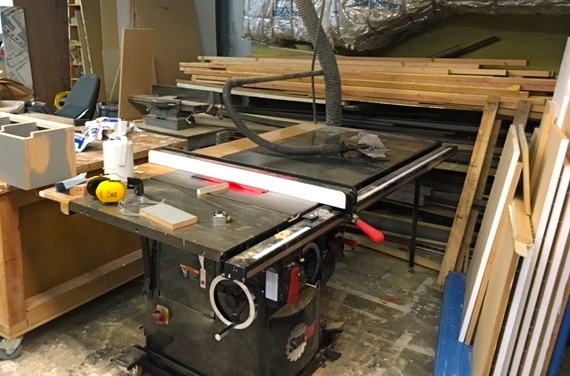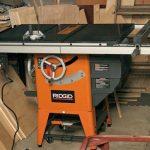Table saws are the most frequently used tools in most woodshops. They are at the very core of all production. Table saws function as the shop workhorses, but in theory, they are only built for one purpose- to spin a saw blade. And most quality industrial table saws do just that, and fairly well might we add. They provide a vibration-free cut with plenty of power for the most demanding jobs.
One thing that a table saw is not able to do by itself is position material for straightness, squareness, and dimensional accuracy. This is where a fence or guide for your table saw comes in handy. (*Note: fences are also called rip fences (for rip cuts), cross cut fences (for cross cuts), positioners, gauges, stops, guides, you name it. We will refer to “fence” or “table saw fence” in this article.)
We will now share with you some great tips for how to choose the best fence for your table saw.
Table Saw Fence Must-Haves
When you purchased your saw you may have had the chance to choose your fence, but realistically you ended up taking home whatever fence came with your setup.
When you are looking to upgrade your fence, whether you chose it or not, there is one vitally important thing your fence must do. It must align absolutely 100% dead on parallel to the saw blade when you lock it into position. This alignment must be adjustable and repeatable. The accuracy of your cuts, the cleanliness of your cuts, and even your own safety rely on the fence being perfectly aligned to the saw blade.
Secondly, your table saw fence must accurately position your material the desired distance from the saw blade. The scale on the fence should be easy to read and be able to be accurately calibrated to the zero points of the saw blade. The scale also needs to be long enough for your desired work capacity.
Table Saw Fence Considerations

It’s important to choose a table saw fence that is accurate enough for your work. When we say accurate enough we mean- do you need to be accurate up to a foot? An inch? Or do you need accuracy up to .08 of an inch or .003 of an inch like some models available? Not all table saw fences are created equal!
It’s also important to consider how much you are producing when choosing a fence. Are you making 10 parts a day or are you making 100 parts a day? Choose a table saw fence that fits your production needs. If you are producing hundreds of parts a day and have to walk around you manual fence each time to set and re-set it- well, you are wasting a lot of time. Save that for the gym and opt for an automated fence instead.
If you want the freedom of working in fractions or in decimals and switching back and forth on a whim without having to do any math, an automated fence is a good way to go. This way you don’t have to deal with a conversion chart.
Additionally, the same goes for your cut list capacity. If you continually work with the same dimensions and want to keep track of parts cut, there are models available that do just this.
Have you thought about durability? Is your fence well made or was it shipped straight from China with a limited warranty? Will it move and wiggle, and even break over time? Is it strong enough to withstand years and years of shop wear and tear? This is really important to take into consideration.
Also, it doesn’t hurt to make sure that you have a great customer support team. Regardless of the brand of the fence you choose, make sure you have a warranty that will support your product for years to come. If you don’t have a good customer service team to help you when you stumble across roadblocks forget about it!
Types of Table Saw Fences
There are a plethora of fences used by a table saw users. There are two types that we find are used most commonly. The first is a T-Square type fence. The most common brands are Biesemeyer, now made by Delta Machinery, Vega, Powermatic, and HTC. These style fences have a 3-point locking system to maintain their squareness and holding a position. These fence systems are square in shape and allow for the easy attachment of jigs and fixtures. They also have easily replaceable surfaces on both sides of the fence made from material found in most shops.
The second type of fence is commonly found on sliding table saws and is generally made by the manufacturer of the saw. A table saw version is also made by Delta called the Uni-Fence. These fences have several features that make them user-friendly. The fences slide back and forth allowing your miter gauge to make cuts on the right side of the blade without the fear of the material kicking back. They also have the ability to lay flat for a lower profile which is useful when cutting thin material.
After-market micro adjusters are also available. These give you the ability to adjust your fence with the turn of a knob. They are available from companies such as Rockler, Kreg & INCRA.
Digital readouts are another option that takes the guesswork out of reading tape measures on your fence scale. Models from Wixey, iGaging and Accurate Technologies are popular.


I am getting some informative guidelines for the perfect installation of a metal chop saw. As a woodworker, I need some best sliding table saw for update my garage. How can I communicate with you?